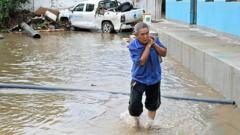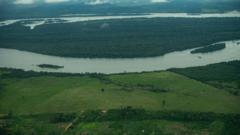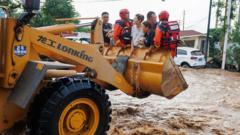The Society for American Archaeology recently experienced a significant absence of federal participation at their annual conference, attributed to abrupt funding cuts impacting archaeological research, including an emphasis on diversity-related topics. Experts warn that these changes could jeopardize the understanding and protection of critical archaeological sites in the U.S.
Future of Archaeology in the U.S. Faces Challenges Amid Funding Cuts

Future of Archaeology in the U.S. Faces Challenges Amid Funding Cuts
Federal layoffs and reduced support threaten archaeological research and preservation efforts, raising concerns over the safeguarding of the nation's historical resources.
The annual conference hosted by the Society for American Archaeology, recognized as one of North America’s largest assemblies of archaeologists, recently illustrated a concerning trend for the future of archaeology in the United States. For many years, the conference has benefited from a robust federal presence, but this year saw a notable decline in government representation. Several federal agencies unexpectedly withdrew travel funding, which attendees believe was influenced by the conference's focus on diversity, equity, and inclusion (D.E.I.).
This shift reflects a broader context of diminished government support for archaeological research, preservation, and museums. Recent months have seen substantial reductions in federal staffing for archaeology and cultural heritage roles, leading to terminated projects and significant job losses across academic, private, and government sectors. Christopher D. Dore, president of the Society for American Archaeology, expressed profound concern, noting, “The financial cost in lost potential and opportunities is incalculable.” He indicated that such sacrifices come at a critical time; with the United States approaching its 250th anniversary, the neglect of archaeological disciplines undermines efforts to foster historical understanding.
Dore warned that reduced staffing could severely limit oversight and management of public land uses, increasing the risks of looting, visitor damage, and erosion to archaeological sites. He emphasized that archaeological resources are non-renewable—unlike some natural resources that can regenerate, once destroyed, archaeological sites lose both their physical and informational value forever.
With the discord between federal funding priorities and archaeological needs growing, professionals in the field are left grappling with an uncertain future for the methods and practices critical to preserving the nation’s rich historical fabric.





















